100 Years of History and Culture! 3 Famous Tokyo Cafes

The Japanese were first exposed to Western culture a little over one hundred years ago. What kind of places did they visit to enjoy lively conversations over unique food back then? This article introduces three such shops that have remained popular throughout generations.
Tokyo: On the Cutting Edge of Culture a Century Ago
Let's go back in time about one hundred years ago. From the late Meiji Period (1868-1912), Taisho Period (1912-1926), to the early Showa Period (1926-1989), newspapers and radio were becoming mainstream. This allowed common people to gain access to world news and information.
Both fashion and architecture incorporated Western culture, creating a boom in the style's popularity. The towns were soon bustling with activity.
Tokyo streets were lined with romantic buildings combining Japanese and Western-style architecture. People wearing Western clothes also increased in numbers.
The cute, short haircuts of the "modern girls" to the round eyeglasses and derby hats worn by the "modern boys" became fashionable during this period.
During this colorful era, international cuisine and cafes started attracting attention. Top-class fruit and bread, Western-style cuisine, and coffee that had not yet appeared up until then were now available. One by one, shops selling these items appeared in Japan's cities.
Cafe Paulista: Feel the Culture & History of a Bygone Era
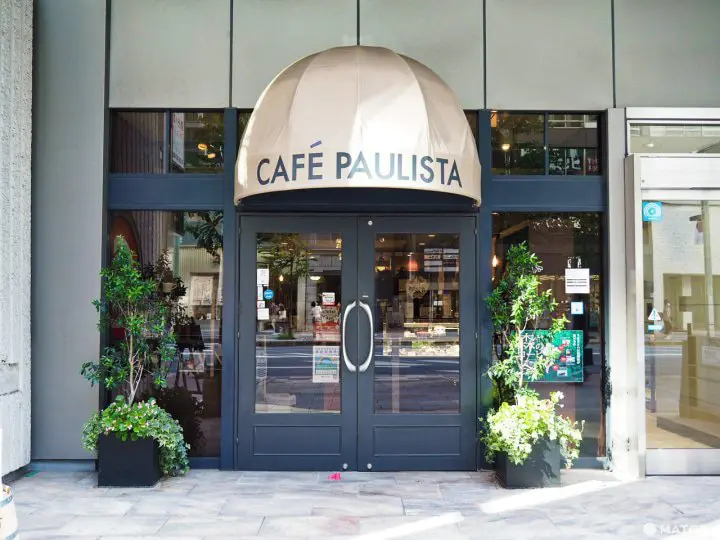
The cafe relocated to Ginza and opened their main shop in 1970, which was renovated in 2014.
Cafe Paulista is one of Japan's oldest coffee shops. Ryo Mizuno, the company's first president, was instrumental in promoting the emigration of Japanese people to Brazil. This was meant to alleviate two big social problems: a food shortage caused by Japan's increasing population and high unemployment among soldiers returning from the Russo-Japanese War (1904-1905).
Mr. Mizuno initially believed that Japanese emigrants could enjoy a good life in Brazil with plenty of food. However, upon arrival, most found themselves on coffee plantations enforcing cruel labor conditions and living difficult lives. Mizuno himself ended up losing money on his emigration business.
As a show of appreciation for Mizuno's efforts, the San Paulo government provided him with free coffee beans. They also entrusted him with the promotion of Brazilian coffee in Japan.
In 1911, Mizuno opened Cafe Paulista in Ginza's 8-chome district to sell beans and spread the word about Brazilian coffee.
Using Ingenuity to Popularize Coffee
During an era when coffee was still uncommon, Cafe Paulista helped popularize coffee and cafe culture.
To describe their cup of joe, Cafe Paulista adopted the catchphrase "As black as the devil, sweet as love, and hot as hell."
First, they hired attractive young men who stood along Ginza's main street dressed in tailcoats, handing out free coffee vouchers.
Then they enlisted the help of well-educated, refined young women who visited homes in upper-class neighborhoods. To popularize this new beverage, they taught the finer points of brewing and drinking coffee.
Adding to a sensational advertising campaign, they sold their coffee at a reasonable price (the equivalent of about 900 yen today).
The end result was a cafe bustling with customers from morning to night. On extremely busy days, they sold more than 4,000 cups of coffee!
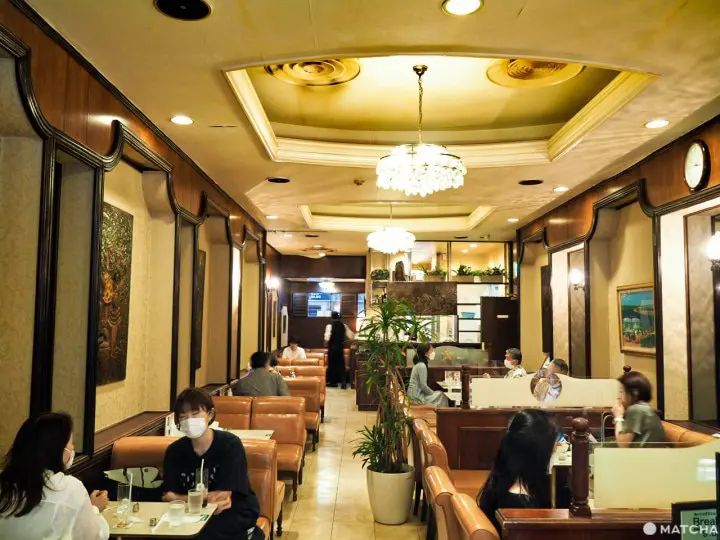
When they first opened, the shop was located near Hibiya Park and the Imperial Hotel. Nearby, there were newspaper companies and many foreign trading houses.
It quickly became a place where students and intellectuals gathered and shared ideas over coffee.
Students from Keio University often stopped by Ginza on their way home from school. They coined the phrase, "Ginbura" referring to their frequent visits to Ginza for a cup of Brazilian (Burajiru) cofffee.
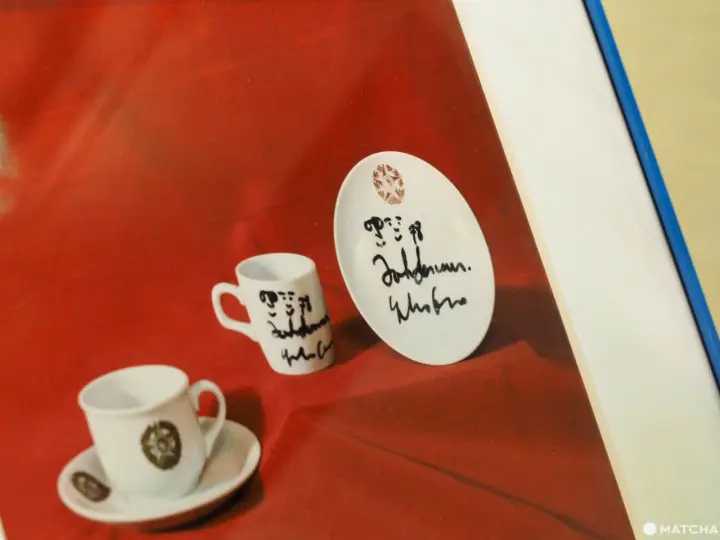
Tableware signed by John Lennon and Yoko Ono
Throughout the years, many famous people have visited the cafe, including the theoretical physicist Albert Einstein, writer Ryunosuke Akutagawa, and John Lennon and Yoko Ono to name a few.
Ryunosuke Akutagawa apparently met newspaper journalists here.
Cafe Florestal: Crafted from Organic Coffee Beans
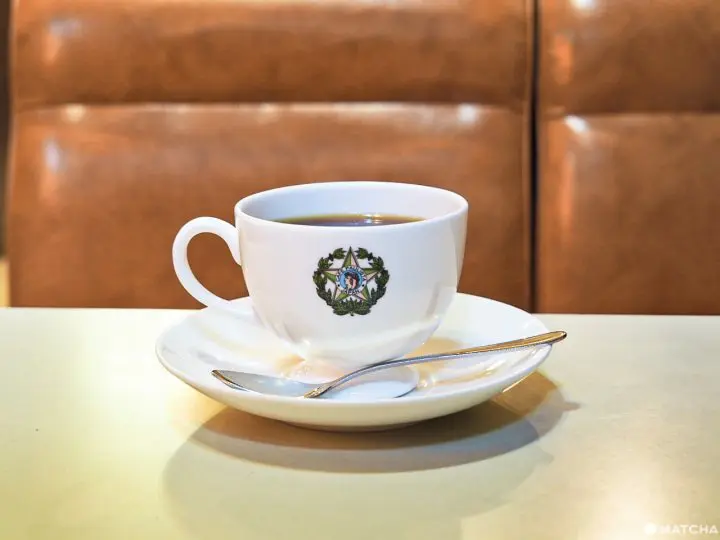
At Cafe Paulista, the staff visit the coffee plantation in Brazil where beans are grown. This is to ensure the quality of the coffee beans and confirm that the right management philosophy is firmly in place.
It's only after establishing a relationship of trust with the grower that the company goes ahead and imports the beans to Japan.
The cafe handles many varieties of beans, but their drink recommendation is the Cafe Florestal (Mori Coffee). The beans for this coffee are cultivated organically on the plantation in Brazil. Cafe Florestal has a fragrant aroma, a rich flavor with a refreshing aftertaste, and moderate acidity.
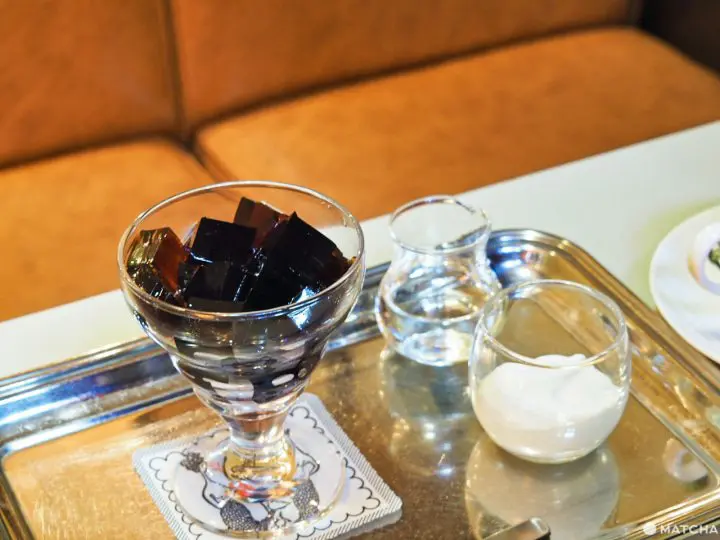
The homemade cakes and sweets are also popular.
If you order the coffee jelly, be sure to pour fresh cream over it. Experience the full-bodied aroma of coffee and the smooth texture of fresh cream.
Shinjuku Takano Honten Fruits Parlor: Adding Fruit to Your Everyday Life
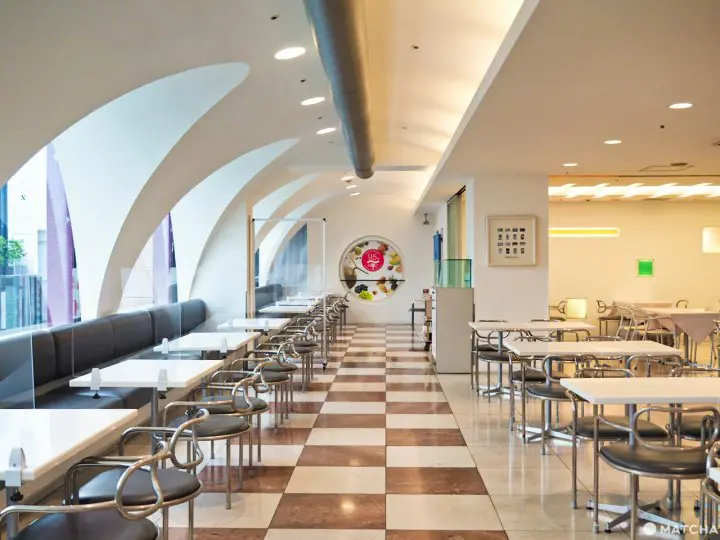
Shinjuku Takano opened for business in 1885, the same year that JR Shinjuku Station was completed.
The growth and development of the Shinjuku area helped popularize fruit as a gift and souvenir. As a result, the shop's business took off.
In 1926, on the premises of Shinjuku Takano Honten, Takano Fruits Parlor Shinjuku Honten opened. By offering sweets made with fresh fruit, the shop suddenly began to attract attention.
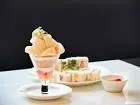
From the beginning, the shop has been particular about their fruit production areas, fruit varieties, and the freshness of fruit.
The fruit stylist (fruit couturier) is responsible for the dessert's design and layout. We were told that they also hone their presentation skills and techniques.
When a new dessert is being developed, the shop president and fruit stylist conduct a taste test. If both do not give their nod of approval, the dessert does not make it onto the shop menu.
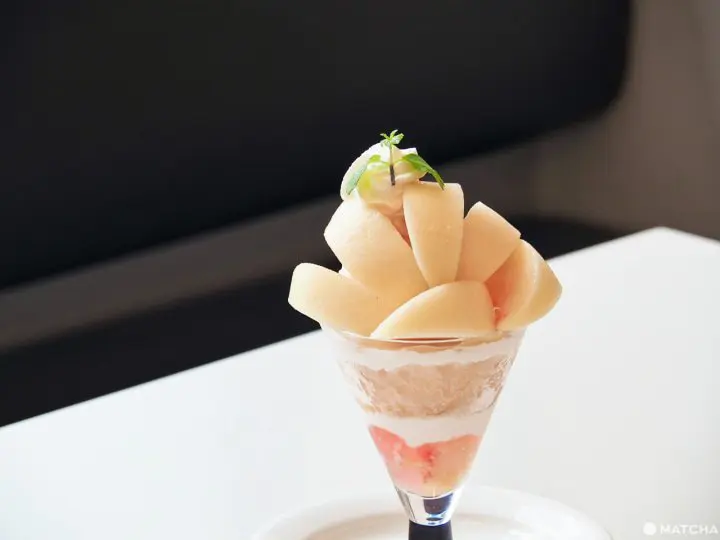
The most popular dessert at Shinjuku Takano Honten Fruits Parlor is the In-Season Fruit Parfait.
The same fruit from different regions can be enjoyed at different times of the year as a parfait. Staff members have been known to seek out fruit from a special production area, bringing it back to the shop to make something special.
The photo above is the parfait called Sunny Country. It is made with peaches from Okayama Prefecture.
The refreshing peach jelly is covered with cream cheese. When you take a bite, the layers instantly melt in your mouth. The very top of the parfait is arranged with bite-sized pieces of peaches.
The fruit's natural fragrance spreads throughout your mouth, and the dessert's textures are delightful (available only in the summer).
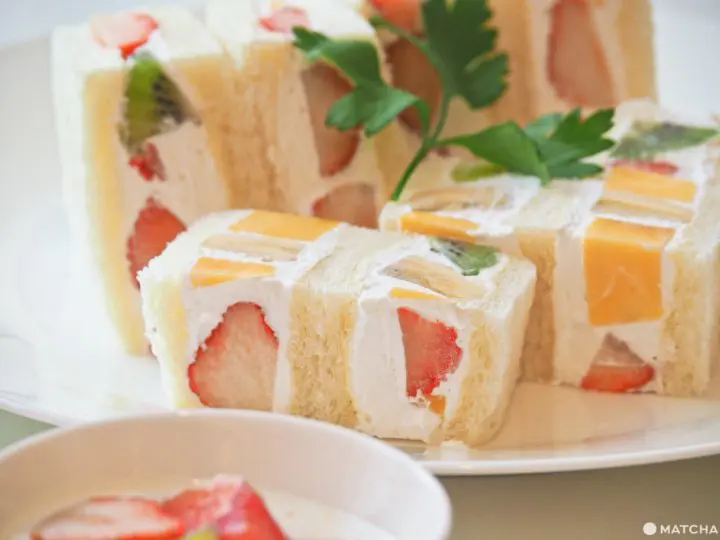
Along with parfaits, another popular menu item is the Fruit Sandwich.
The sandwich contains a variety of sweet and aromatic fruit, including bananas, strawberries, and kiwi. Sandwiched between the bread is fluffy whipped cream.
It has a light, delicious flavor with a refreshing aftertaste, even making it ideal for breakfast.
Shinjuku Nakamuraya Manna: Indian Curry Loved Across Generations!
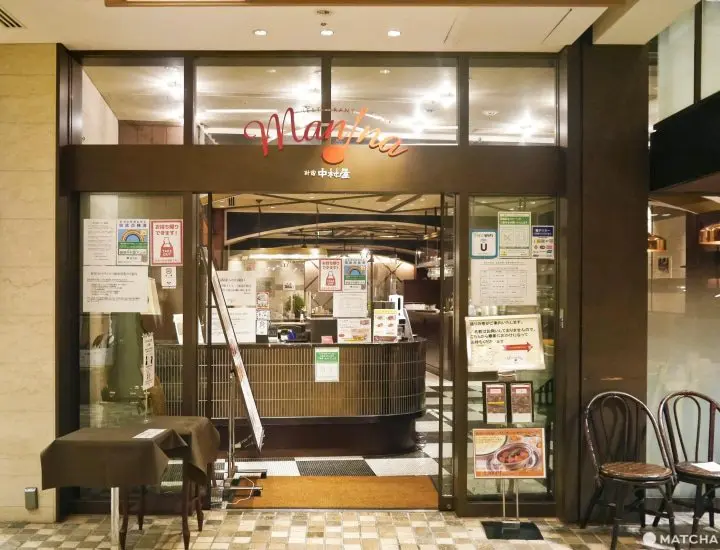
When thinking of bread that's unique to Japan, anpan (red bean paste-filled bread), jampan (jam-filled bread), and creampan (cream-filled bread) come to mind. In fact, creampan originated at Shinjuku Nakamuraya, a bakery that opened in 1901.
Since opening, their bread has been a huge hit. However, customers requested a place on the premises to relax and have a cup of coffee or tea. This prompted the company to add a coffee shop in 1927.
One of the shop's menu items is Indo Karii (Indian-style curry), an uncommon dish when first introduced. At the time, curry rice was becoming popular in Japan, but served in a European-style with sauce thickened by flour.
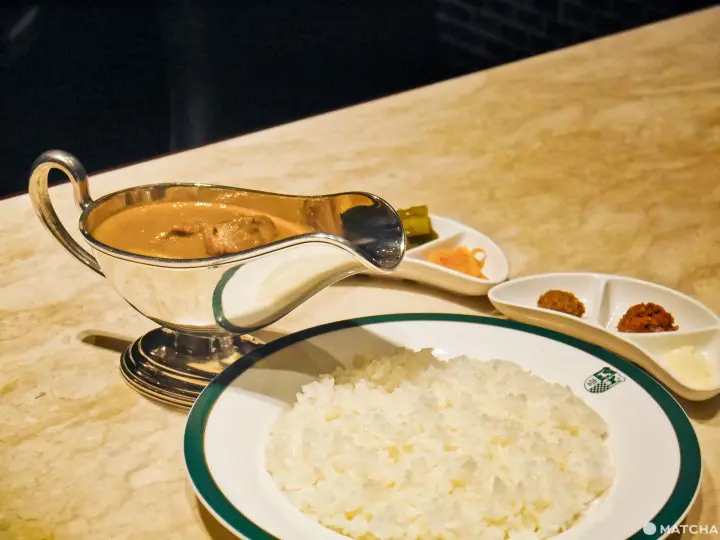
The birth of Indian-style curry was the result of a chance meeting between the Soma family, founders of Nakamuraya, and Rash Behari Bose, a leader of the Indian independence movement. The Soma family provided refuge for Bose, who was living in exile in Japan at the time.
Mr. and Mrs. Soma had been thinking about opening up a coffee shop on the bakery premises. They went ahead with their plan after Bose suggested serving an Indian-style curry there.
This resulted in a curry reminiscent of India that contained bone-in chicken and a rich, spicy flavor. Although some customers didn't initially take to this new flavor, word spread about this new taste sensation. In time, this curry became one of Nakamuraya's best sellers.
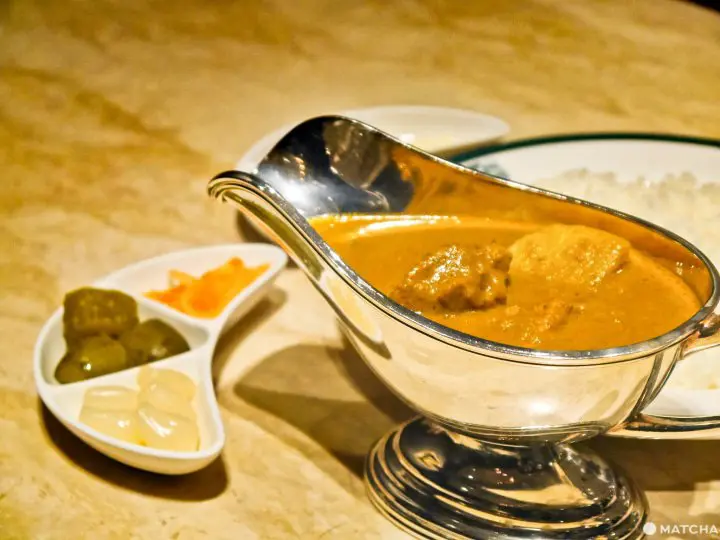
The curry contains 20 different spices selected after experimenting with various flavor combinations. There's a distinct smoothness within the spicy flavor. The sweetness comes from the onions grown on Awaji Island, which have high sugar content.
In cooperation with farmers, Nakamuraya purchases whole chickens instead of requesting specific pieces of meat. So when customers order the curry, they can enjoy lean pieces of chicken breast along with dark, juicy chicken meat.
The Indian-style curry is served with additional seasonings and toppings on the side. They include three kinds of chutney (lemon, mango, onion), grated cheese, shallots, and Russian-style pickled cucumbers (pickled with vinegar). When added to the curry, you'll enjoy the constantly changing flavors.
There are so many toppings and seasonings to try. Some customers prefer having just one of their favorite toppings brought to their table. Refills are also complimentary.
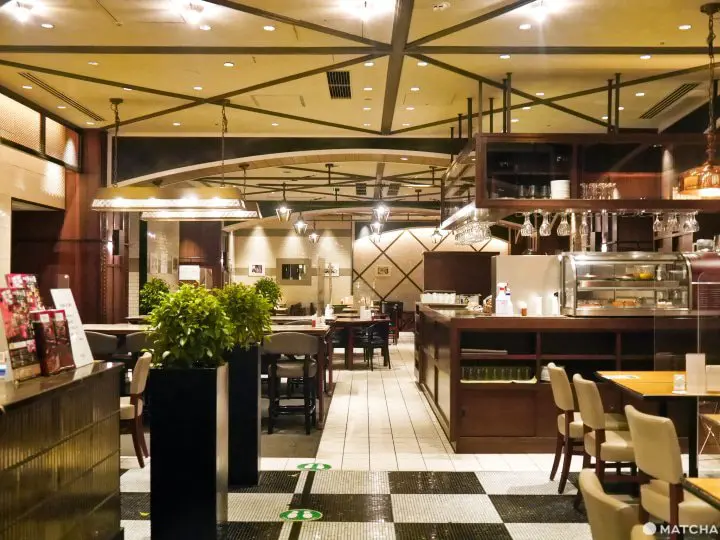
For regular customers, the history-filled Nakamuraya is a place where family members across generations can enjoy the same great taste.
Sample Some Long-Standing Flavors
The shops introduced in this article have each been in business for about one hundred years. During that time, Japan's food culture has undergone some significant changes.
A century ago, these long-standing businesses bravely took on new challenges, such as building one of the first coffee shops and introducing unique menu items. So rather than sinking into obscurity, these shops adapted to the changing times while preserving their traditions.
If you have the chance, try stopping by one of these shops. As you relish in the ambiance of their century-old history, please enjoy their unforgettable dishes and beverages!
Read also
In cooperation with Ginza Cafe Paulista, Shinjuku Honten Takano Fruits Parlor, and Shinjuku Nakamuraya Manna.







































![[Coupon Available] Attention Overseas Winter Sports Fans! Nagano's Sports Depot Has Evolved](https://resources.matcha-jp.com/resize/720x2000/2026/01/05-254819.webp)
![[2 hours from Tokyo ] 10 Quiet and Breathtaking Views of Mount Fuji in Yamanashi Hokuto City , Yamanashi - Part 2](https://resources.matcha-jp.com/resize/720x2000/2025/12/16-253037.webp)
